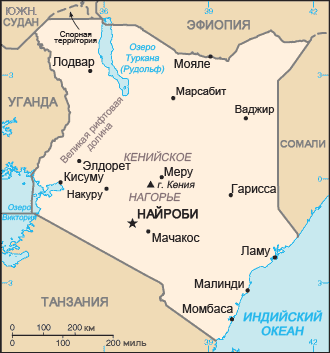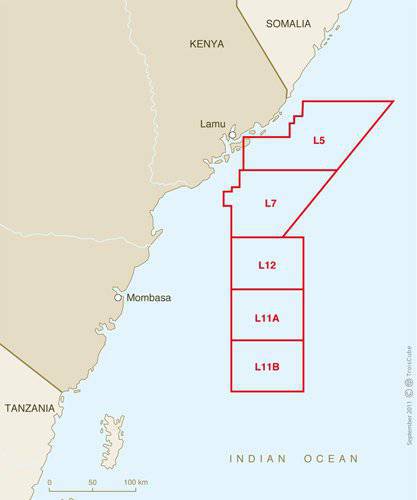Kenyan army conducts military operation in Somalia
 As early as October 16, the Kenyan Armed Forces invaded southern Somalia. At the same time aviation bombed the positions of the Jamaat Al-Shabaab group (it is also called Al-Shabab, Hizbul Shabaab, from Arabic. "Youth Party"). The purpose of the Kenyan invasion is the need to defeat the forces of the Islamic movement Al-Shabab and establish a security zone on the border of the two countries. The actions of the Kenyan army supported the forces of the Government of Somalia.
As early as October 16, the Kenyan Armed Forces invaded southern Somalia. At the same time aviation bombed the positions of the Jamaat Al-Shabaab group (it is also called Al-Shabab, Hizbul Shabaab, from Arabic. "Youth Party"). The purpose of the Kenyan invasion is the need to defeat the forces of the Islamic movement Al-Shabab and establish a security zone on the border of the two countries. The actions of the Kenyan army supported the forces of the Government of Somalia.The reason for the invasion was the fact that the fighters from the Islamist movement Al-Shabab, the largest in fragmented Somalia and on the African horn, who are accused of close ties with Al-Qaeda, act not only on Somali territory, but they raid the lands of neighboring states to abduct people. Kenyan Foreign Minister Moses Masika Wetangula said he had made a move to “protect himself.” Homeland Security Minister George Saytoti called the al-Shabab group "the enemy of Kenya" and swore an oath to attack the militants of this movement, wherever they are.
Recently, there has been a series of kidnappings, so an Englishwoman and a Frenchwoman were stolen recently from a Kenyan resort. And this has hit the tourism industry in Kenya, which gives the country a significant portion of foreign exchange earnings.
October 4 2011 Islamist group staged a powerful terrorist attack in Mogadishu - more than 80 people died in an explosion in the government quarter. On October 13, Al-Shabab militants kidnapped two Spanish citizens who, as employees of the Doctors Without Borders NGO, worked in a Somali refugee camp in Kenya. In response, the organization partially curtailed its activities in the country.
The group controls a significant part of the south of Somalia. The representative of Al-Sha'ab Sheikh Ali Muhammad Rage in Mogadishu said that Kenya’s aggression against the implementation of Sharia law would be stopped.
The operation in Nairobi was called "Protect the country" (Linda Nchi). It was agreed with the Somali interim federal government, with the leadership of Ethiopia and Uganda, as well as with the United States and France. Before the start of the military operation, Nairobi created a grouping of the Ground Forces, Air Force and Navy with a total strength of up to 4 thousand military personnel on the border. From the side of Somalia, the Kenyan group is supported by the forces of the interim government and the armed formations of the Somali groups Ras Kamboni and Ahlu-Sunna-Waljamaa (up to 4-5 thousand fighters in total). Kenyan air force reinforced by US drones, and from the sea, the operation is covered by ships of the US and French navies from the international grouping of forces to combat piracy. The main task of the naval group is the blockade of the port of Kismayo, through which the Al-Shabab movement receives weapon and ammunition from abroad (mainly from Yemen and Eritrea).
The offensive is conducted in the provinces of Lower Juba, Middle Juba and Gedo, the main attack is being directed towards the city of Kismayo from the northwest (from Afmadou) and from the southwest (from Barare). In the first echelon come the forces of Somalis, who are trained and armed with Kenyans. Parts of the armed forces of Kenya support them with artillery fire, armored vehicles, air force strikes. On 24 October, the coalition forces advanced from the border to 100 km and destroyed several training camps for Al-Shabab militants. Then progress slowed down due to torrential rains, which worsened opportunities for advancement. Therefore, the command of Al-Shabab was able to conduct a general mobilization in the southern provinces.
Islamists have not only to fight in southern Somalia, but also in the metropolitan province of Benadir, where the interim government troops and the African Union peacekeeping contingent of AMISOM are trying to dislodge the militants from the capital.
There is an opinion that the war is connected with the conclusion by the Kenyan government and the international oil and gas corporation Total of a contract for the exploration of oil fields on the shelf of the Lamu archipelago, including within the exclusive economic zone of the Somali state. The Institute of the Middle East has published a map of this field. Currently Total experts are already conducting seismic exploration on the shelf. Therefore, there is a possibility that the Somali Interim Government could conclude with Nairobi a secret agreement that gives them the right to extract “black gold” in the Somali exclusive economic zone in exchange for Kenya’s military assistance in the fight against Al-Shabab. Paris and Washington, of course, also in the know.

Total Exploration Zones of Offshore Oil Fields Kenya and Somalia
Information